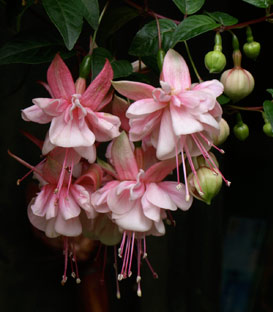|
|
There is increasing evidence that asthma and hay fever may be linked to food sensitivity but while the investigations are done suffers still need to avoid inhaled allergens. Alistair Rivers explains how to reduce risk of triggering an attack in your garden.
|
||||||||||||||||||||||||||||||||||||||||||||||||||||||||||||||||||||||
|
Asthma is the most common chronic disease in the world. In southeast England one in every in adults is affected; nationally, a child suffering an acute asthma attack is admitted to hospital every nine minutes. For the three million asthma suffers in the UK merely stepping into their own garden in summer can trigger a severe asthma attack. Use living filters to remove the dust: a deciduous hedge or climbing plants on a trellis. Dust is always the biggest problem so choose plants with sticky leaves which trap pollen and dust and can then be disposed of safely when their work is done. Also remember to avoid plants with spines and milky sap which may cause skin reactions. Luckily fruit trees and bushes that do not have spines can be used, so strawberries are’ in’ but rhubarb is ‘out’ because of its poisonous leaves. Care must be taken when picking herbs as in hot weather the essential oils can cause reactions To me the Low Allergen Garden is not an end in itself but an example to asthma sufferers of what can be achieved with a little cunning and some readily available plants. Low allergen planting list
First published in the FoodsMatter magazine 1999; revised for the FoodsMatter site 2014
For more articles on allergen-free gardening
|


 In your own garden you need to eliminate those plants which contain the most potent triggers. This means selecting plants with sterile flowers or ones which produce heavy pollen not easily blown by the wind. You must reject all wind pollinated plants such as British native trees and plants which produce large quantities of light pollen, like daisy flowers.
In your own garden you need to eliminate those plants which contain the most potent triggers. This means selecting plants with sterile flowers or ones which produce heavy pollen not easily blown by the wind. You must reject all wind pollinated plants such as British native trees and plants which produce large quantities of light pollen, like daisy flowers. 










